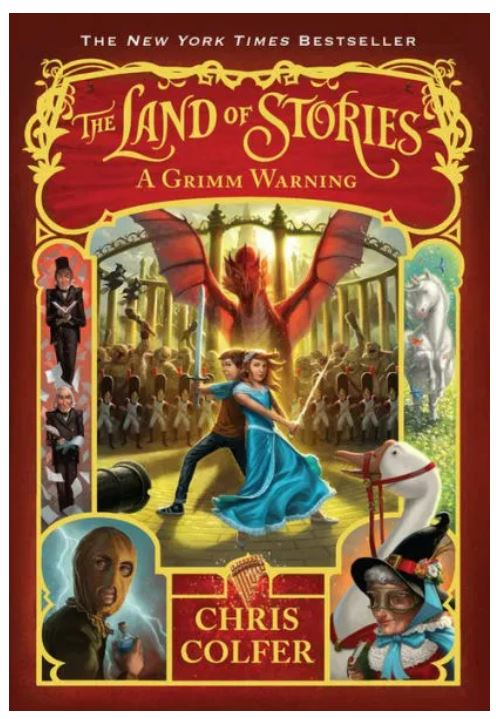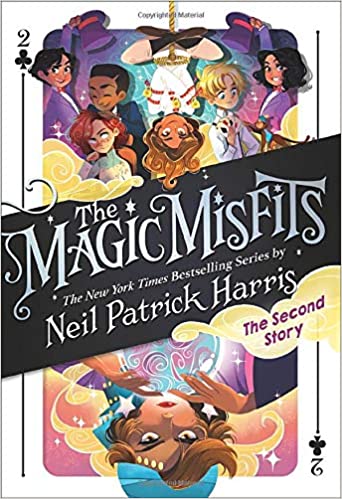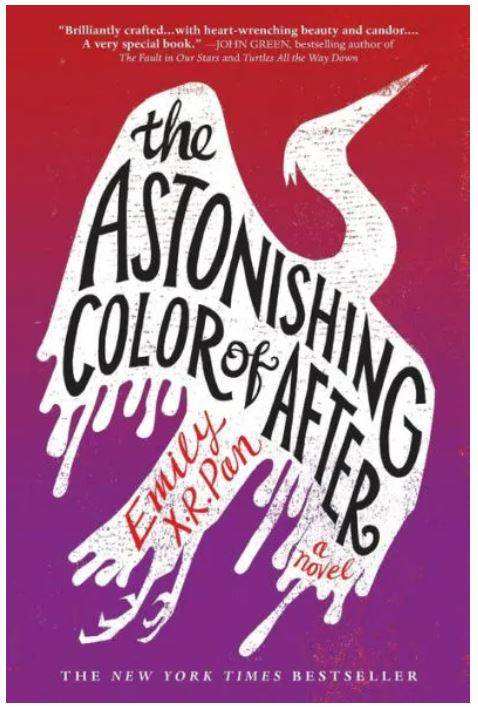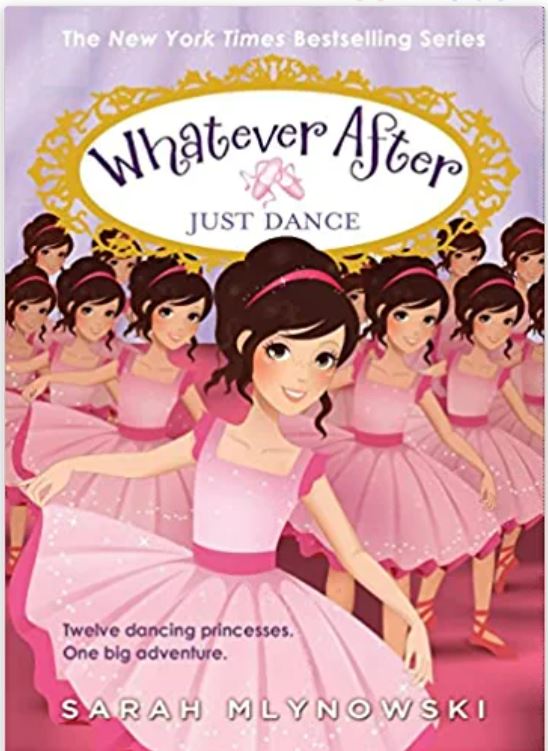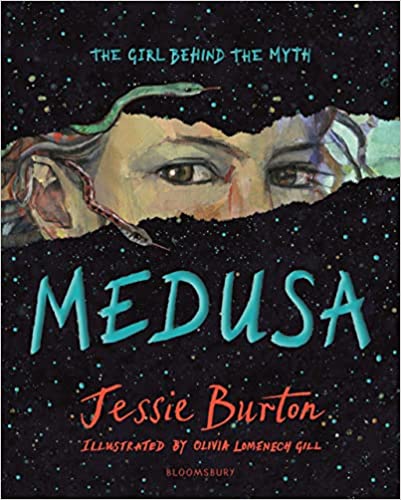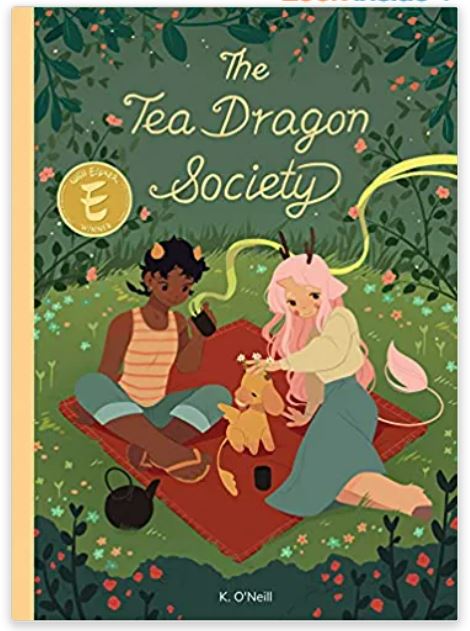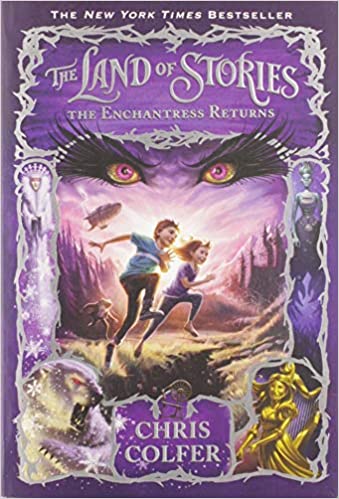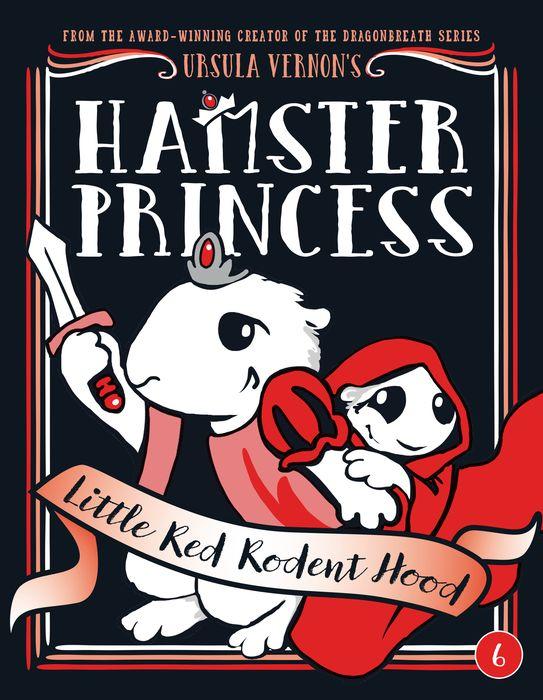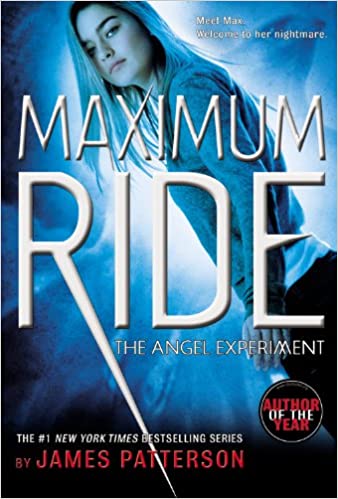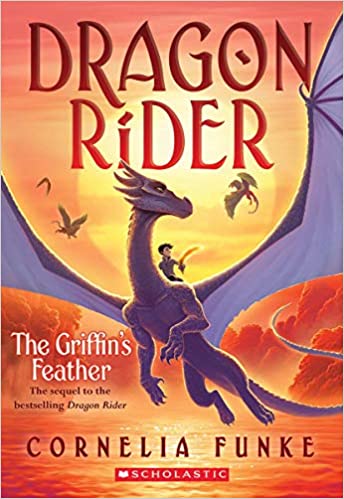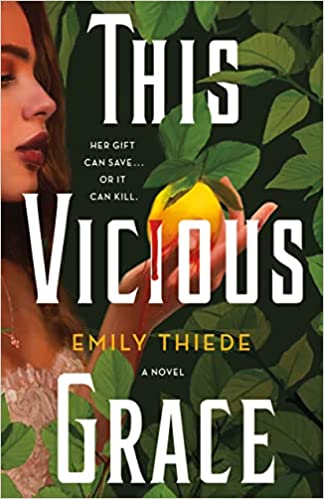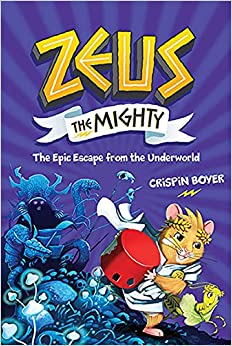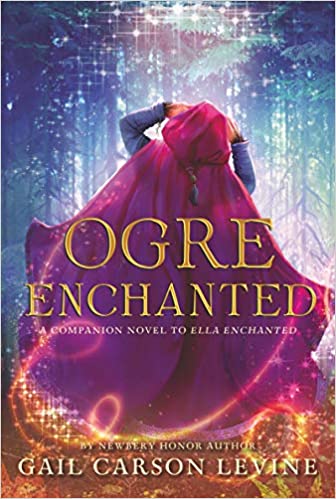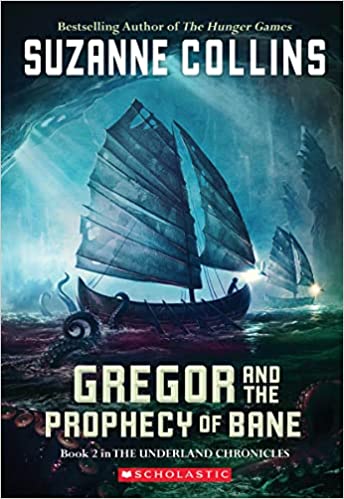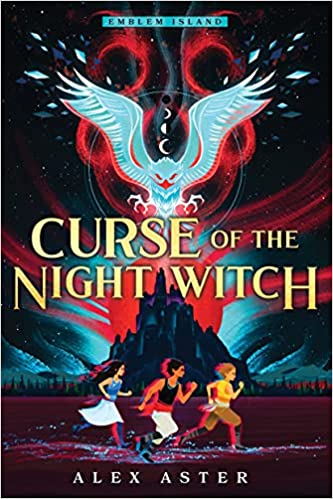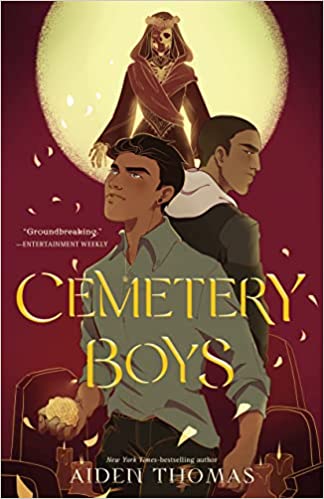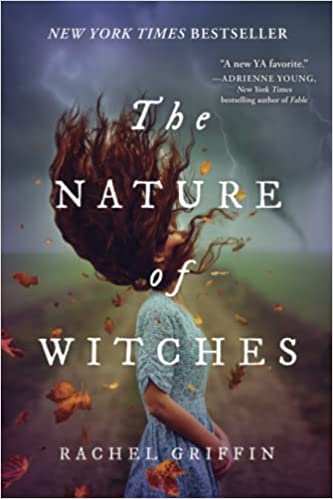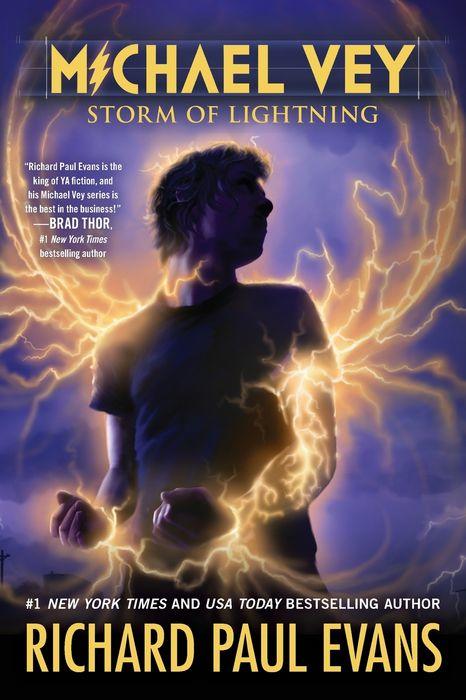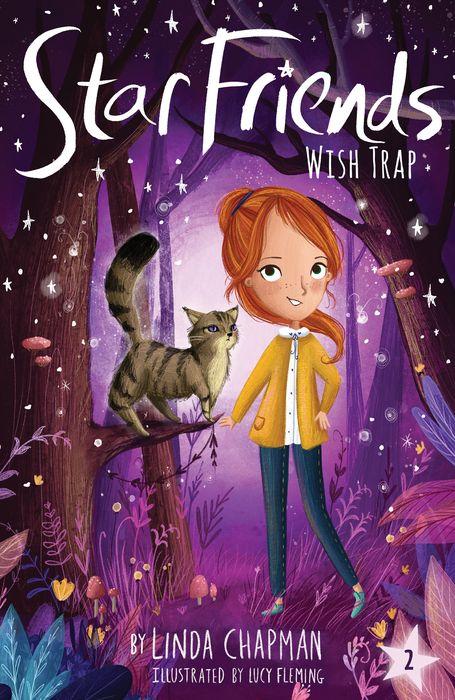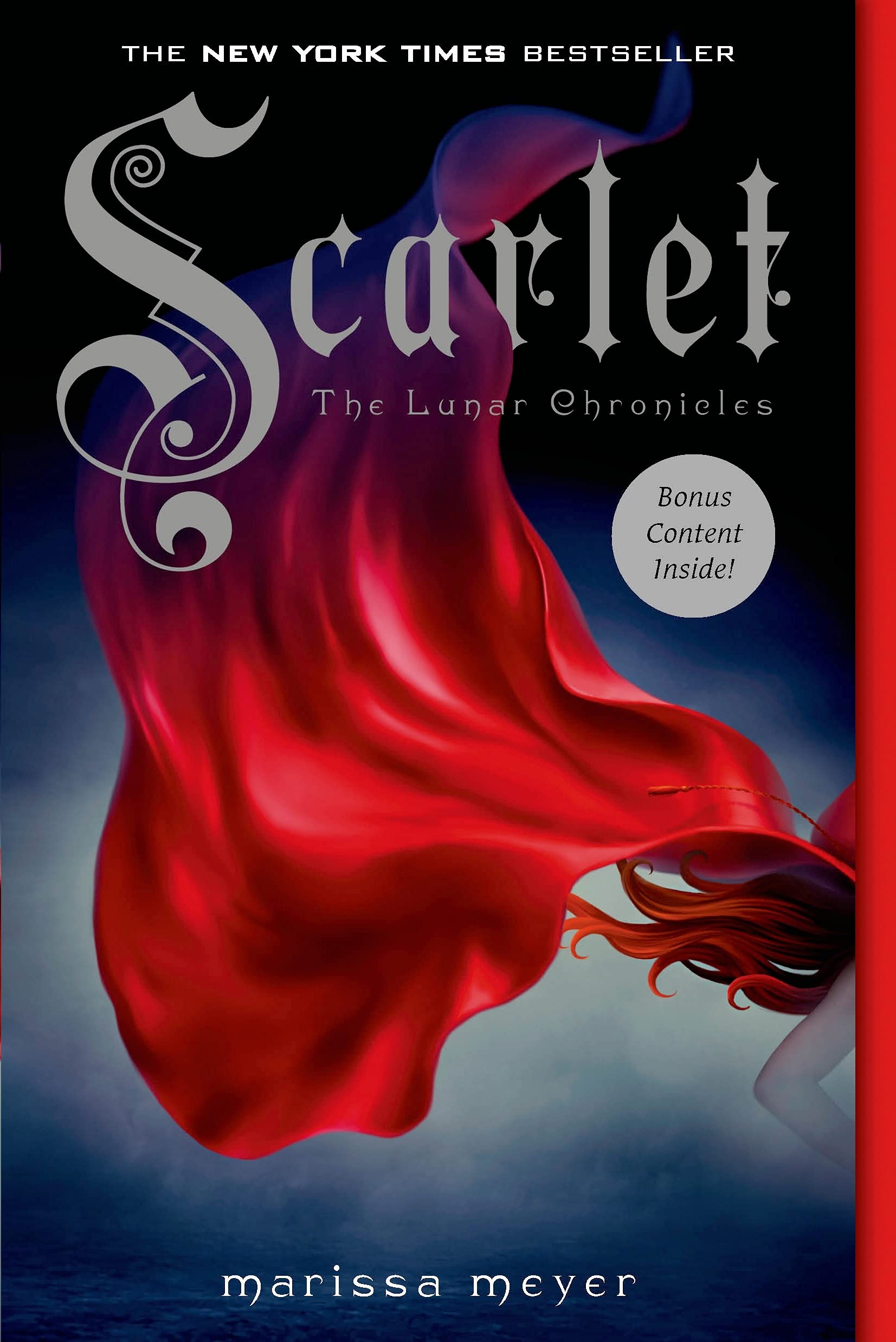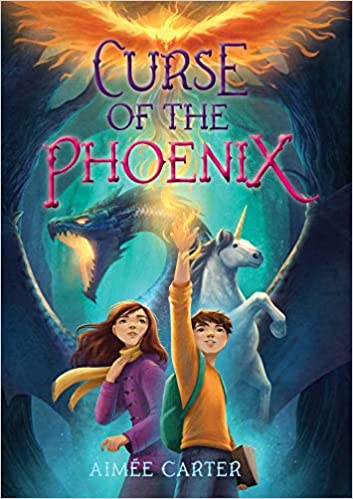While his sister, Alex, decided to stay in the fairy world to become a fairy trainee, Conner hasn’t had any adventures and he’s starting to like it that way. While he misses the Land of Stories and its endless fun, the real world has presented Conner with exciting opportunities, such as a school trip to Europe with his crush, Bree. While Alex busies herself with her upcoming acceptance into the Happily Ever After Assembly – the council of kings, queens, and fairies – Conner travels to Europe for a reading of three recently recovered stories written by The Brothers Grimm that had been sealed away for 200 years.
But the final story reveals a grave warning for the fairytale world, and Conner knows fate has brought him here to decipher the message. He must warn Alex and his friends that General Marquis, a French officer from Napoleon’s Army, wanted to launch an attack on the Land of Stories centuries ago. The Brothers Grimm were able to delay them until the present time, but very soon a portal will open and the French Army will pour into the fairytale world to wreak havoc. Conner must warn them before the army arrives.
Bree, who has been suspicious of Conner’s tales, tags along as they travel through Europe with the help of a German boy named Emmerich and search for an entrance to the Land of Stories. Conner warns Alex of the coming threat, but sadly, Alex has news in return: The Fairy Godmother, their grandma, is sick. Despite their grandmother’s impending death, the twins work together to rally the kingdoms and prepare for war. Though the battle is difficult, the fairytale world is able to beat back the French Army, but the victory is bittersweet. The Fairy Godmother passes away and now Alex must step up and take on the role of Fairy Godmother. But at least through everything, the twins still have each other.
Alex and Conner are entertaining and relatable narrators. Alex’s serious and scholarly nature contrasts Conner’s witty and easy-going personality, making them a fun duo. As the twins grow older, this installment of the Land of Stories attempts to deal with more mature themes, such as first love and the death of close family members. However, Alex and Conner always support each other during rough times. The twins’ selflessness is admirable, as is their dedication to doing what’s right even if it interferes with their personal desires.
Though the plot for this novel was a bit more outlandish than the previous stories, the Land of Stories series stays true to its themes of relying on family, protecting one’s friends, and staying brave in the face of evil. Additionally, one of main conflicts in this book is that to defeat General Marquis’ army, all the factions in the fairytale world will need to work together. The kingdoms haven’t always seen eye to eye, and they have also excluded certain groups like the elves and troblins (the name used to refer to the troll and goblin community) due to past grievances. However, everyone is stronger together. Alex says, “Every creature is an individual and we can’t punish an entire race for mistakes made by individuals. As easy as it is to label large groups with the reputation of their ancestors, it isn’t right.”
With the new council in place, Alex and Conner hope that the Land of Stories can recover from the war and move towards a more united future. However, the book ends by suggesting that the twins’ greatest personal battle is about to begin: a strange, masked prisoner who vows to eliminate all fairies is caught stealing an unknown potion from the twins’ late grandmother’s bedroom. It seems that Alex and Conner will still have plenty of adventures ahead of them. Readers who enjoy epic stories with feats of bravery should also check out the Percy Jackson and the Olympians Series by Rick Riordan and the Kingdom Keepers Series by Ridley Pearson
Sexual Content
- Conner makes a joke to Alex about how their personalities are so different. Conner says, “Alex, I’ve been impressed by you since the womb. I’m sure your part of the uterus was much neater and more organized than mine.” Alex replies, “Really, Conner? A uterus joke?”
- Goldilocks and Jack, members of the Land of Stories, kiss at their wedding. “Jack and Goldilocks locked lips and their crowd of guests cheered wildly.”
- Rook, a village boy who Alex is crushing on, kisses Alex several times throughout the story. “Rook stepped even closer to [Alex] and placed a hand on the side of her face. He looked into her eyes for a moment and then slowly leaned his head closer to hers. . . Rook kissed her for the first time.” Later, Alex says that her favorite days are the ones that end with a good-night kiss from Rook.
- Bree kisses Conner on the cheek. Conner says, “I’ve come to the conclusion that I might – possibly – maybe – do have a crush on you.” Bree replies, “I have a crush on you too.”
Violence
- General Marquis threatens the Brothers Grimm. “. . . The brothers were gagged again, their hands retied behind their backs, and the black sacks placed over their heads. . . “ Then the general says, “Find a portal in two months or I’ll make you watch as I personally kill everyone you love.”
- The talking lion statue explains how Mother Goose and the Brothers Grimm made the magical portal open. “Mother Goose took a dagger and made a cut in her hand and one in Wilhelm Grimm’s hand . . . they held their hands tightly together and let some of the magic from Mother Goose’s blood flow into his.”
- When the portal is opened and all the French soldiers fall out, the scene is gruesome. “Hundreds of men and pieces of equipment rained from the sky . . . many soldiers barely missed being crushed by the carriages or cannons or horses that fell beside them . . . Most of [the soldiers] held their heads in agony or vomited.”
- General Marquis executes an old man who helped the soldiers. “‘Unfortunately, you know too much,’ [General Marquis] said. ‘Get rid of him.’ The old man screamed. ‘No! Please! I have a family!’ he pleaded, but it was no use. The general didn’t have an ounce of mercy to spare. [The soldiers] dragged the old man into the foggy woods and his screams echoed through the trees around them. A moment later a gunshot was heard and the woods were silent again.”
- While Alex and Conner are on the back of one of Mother Goose’s geese—Lester—a cannon shoots him. “A rogue cannonball bolted through the sky and blasted through Lester’s right wing. The gander squawked in pain as he and the twins began rapidly descending toward the trees on the horizon. . . They crashed hard into the ground. . . Alex and Conner were too wounded to get to their feet. They both had broken several bones. They heard Lester squawking in the distance – he was perhaps in even more pain than they were.” Alex and Conner fall unconscious. Their injuries are magically healed by a witch.
- A witch describes how she healed Little Bo Peep’s broken heart. “I cut out a small piece of Little Bo’s heart, the part that was full of hurt and longing for the men in her life, and I turned it to stone.”
- General Marquis shoots two of his soldiers. “General Marquis turned to [the soldiers] and shot them both in the foot. They fell backward and slid down the canyon walls. They moaned as they tried to get to their feet. A low growling noise vibrated up the canyon walls and the [soldiers’] moaning increased. A series of deafening screeches echoed next from the canyon, but they weren’t human. . . the camp heard the [soldiers] scream as they were eaten alive” by a dragon.
- The battle between General Marquis’s army and the Land of Stories takes place over nearly 40 pages. A few people’s deaths are described. There is some violence, such as when Alex fights back by using magic. “Alex swished her wand through the air at [the soldiers]. Their rifles were transformed into long-stemmed roses that pricked their fingers before they could shoot.”
- When Rook betrays Alex, she gets angry and lashes out violently. “Without thinking, Alex took her heartbreak out on the soldiers charging at her. She cracked her wand like a whip and a burst of white light sent the soldiers flying into the air.”
- Gator, a troll, dies in the battle. “Gator was too small to fight the soldier off alone and lost his balance. The soldier stabbed him in the stomach and Gator fell to the ground. . . the little troll died before he could say another word.”
- Little Bo Peep dies. “Bo Peep clutched the side of her chest. . . [she] collapsed on the ground and became very still. . . Little Bo Peep had died of a broken heart.”
- The unicorns help fight the dragon. “The unicorns stabbed their horns into the dragon’s feet and he roared in pain. The dragon picked the unicorns up with his front claws and threw them into the forest. . . The dragon grew impatient and scorched the remaining unicorns with his breath.”
- The dragon turns on General Marquis and kills him. “The dragon took a deep breath and exhaled a long and powerful fiery geyser from his lungs. The geyser hit the general and he was consumed in its vicious flames. When the dragon stopped, the ground beneath the general had been scorched black and General Marquis was gone.”
- The Fairy Godmother kills the dragon. “A long, silvery trail erupted from the tip of the Fairy Godmother’s wand. She happily waved her wand in the air as if she were conducting an orchestra and the trail slashed through the air like a giant whip. The trail grew longer and longer by the second. The dragon jumped back and forth, trying to avoid it. Eventually, the trail was so long the dragon tangled himself in it when he tried flying away. . . She cracked her wand like a whip again, and the trail that was wrapped around the dragon grew brighter and brighter. The others covered their eyes at the blinding sight and the dragon burst into clumps of ash.”
- When defeating the dragon, the Fairy Godmother exhausted her powers. “The Fairy Godmother’s eyes closed for the final time. Her body became weightless in [the twins’] hands, transformed into hundreds of bright sparkling lights.”
Drugs and Alcohol
- Mother Goose gets poisoned while in a tavern.
- Mother Goose says, “Last time I officiated a wedding, Puss in Boots drank all my bubbly.”
- Mother Goose has a flask hidden in her hat and “takes a swig” from it twice.
- Mother Goose talks about a tavern that she went to with her “drinking buddies.”
- Mother Goose wakes the unconscious Conner by splashing him in the face with alcohol. “Mother Goose removed her flask from her hat and splashed [Conner’s] face with the liquid inside.”
Language
- General Marquis calls Mother Goose an “old lush.”
- Mother Goose calls Lester, her goose, “mattress filler”
- Queen Red Riding Hood refers to her rival Bo Peep as “Little Bo Bimbo” and, “A pain in the shepherdess.”
- When the fairies don’t want to join the war, Conner says, “Screw the code.”
- Conner calls Rook a “stupid boy who needs a haircut.”
- Conner refers to the evil enchantress Ezmia as a “narcissistic wench.”
- General Marquis calls Conner a “stupid, pathetic, ignorant little boy.”
Supernatural
- All fairytale stories are true in the Land of Stories . . . there is a portal connecting the Land of Stories to the human world, called the Otherworld.
- Because Alex and Conner’s mother is from the human world but their father is from the Land of Stories, they have a bit of magic in their blood which brings them good luck.
- The Fairy Godmother can do magic. She is described by General Marquis as someone who “wears robes that sparkle like the night sky, has white flowers in her hair, and carries a long crystal wand.” She can travel between the fairytale world and the Otherworld as well as transform objects.
- Mother Goose is another main character in the story. She can do magic, such as teleport, and she travels on a giant goose named Lester.
- Mother Goose escapes the Marquis by using magic. “She reached out an open hand and the golden egg floated straight out of the box and into the wagon where she sat. And, with a blinding flash, Mother Goose and the golden egg disappeared into thin air.”
- Conner has a magic mirror that allows him to contact the fairy world so he can talk to Alex. He uses it periodically throughout the story.
- Alex uses magic to transform her clothes. “Alex picked up her crystal wand from her nightstand and waved it around her body. Her plain nightgown was instantly turned into a long, sparkling dress the color of the sky, and a headband of white carnations appeared on her head.”
- Alex has a unicorn. Unicorns have silver horns that can guide them to people in need.
- As part of Alex’s fairy training, she goes out each day and performs three wishes to townspeople in need.
- Conner and Bree get information from a talking lion statue.
- Conner and Bree open the portal to the fairy world with a magical panpipe.
- The twins cast a magic spell that teleports all the soldiers of the Land of Stories’ kingdoms to the same place. “The world appeared in slow motion as they raised the wand above their heads. The twins could feel magic rush through their bodies and into the wand in their hands. . . a gigantic blast of white light erupted from the tip and surrounded them… Alex and Conner had turned themselves into a shooting star that bolted across the sky faster than anything had ever traveled before. . . Upon seeing it, every soldier of the armies, on duty or in hiding, turned into his or her own sphere of light and instantly shot through the sky to join the twins.”
- General Marquis hatches a dragon, the first of which to be seen in the fairytale world for many years. “The dragon emerged from the trees and landed at the edge of the fairy gardens. He was almost as tall as the fairy palace. Red scales covered his body and a forked tongue slipped in and out of his sharp teeth. He had two horns and sharp spikes covered his head and traveled down his spine. Two large wings grew out of the dragon’s back and a long tail whipped around behind him.”
Spiritual Content
- Mother Goose says, “Thank God.”
- Conner sees a painting of Jesus in a castle in Germany.
- When the dragon attacks and there is little hope left, Conner says that the only thing they can do is pray.
